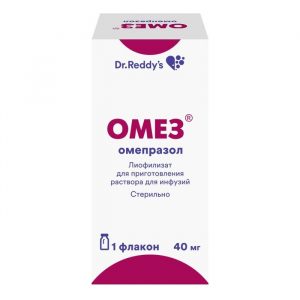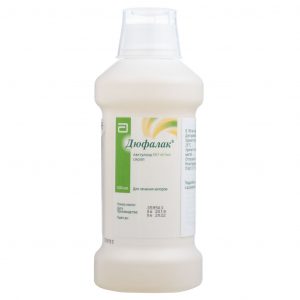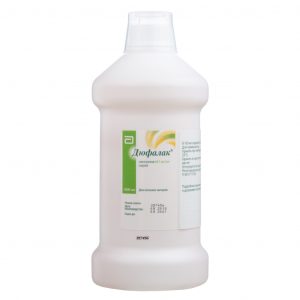Description
Latin name
Maalox
Packaging
bottle of 250 ml
Indications
peptic ulcer of the stomach and duodenum in the acute phase
acute gastritis, chronic gastritis with increased and normal secretory function in the acute phase duodenitis, enteritis
hernia of the esophageal opening diaphragm reflux reflux reflux reflux disease , after taking medication, drinking coffee, nicotine, alcohol
for the prevention of side effects in the treatment of corticosteroids and NSAIDs.
Contraindications
Severe renal failure
hypersensitivity to active substances and other components of the drug
hypophosphatemia
fructose intolerance (due to the presence of sorbitol in the preparation)
children and adolescents under 12 years of age.
Use during pregnancy and lactation
Contraindicated in pregnancy and lactation.
Composition
15 ml of suspension contains:
grd aluminum hydroxide 5 grd
magnesium hydroxide (as ge la) 600 mg
Excipients: concentrated hydrochloric acid – 21.3 mg, citric acid monohydrate – 9.83 mg, peppermint leaf oil – 1.89 mg, mannitol – 37.5 mg, methyl parahydroxybenzoate – 15 mg, propyl parahydroxybenzoate – 7.5 mg, sodium saccharin – 4.21 mg, sorbitol 70% – 214.29 mg, hydrogen peroxide 30% – 9.75 mg, purified water – 4746.59 mg.
Dosage and Administration
Inside.
Adults and children over 15 years of age. The contents of 1 2 packets (15 30 ml) 1 1.5 hours after eating or when heartburn occurs. Before opening the mini-package, gently mix its contents, carefully kneading the package between your fingers. Squeeze the contents of the package into a spoon or mouth (take suspension without preliminary dilution).
If necessary, you can take an additional dose of the drug 2 hours after the previous dose. The maximum daily dose is 12 packets (180 ml).
The course of treatment should not exceed 2-3 months. With occasional use (for example, with discomfort after errors in the diet), take 1-2 packets (15-30 ml) once.
In case of mild renal failure, the maximum daily dose is 8 packets (120 ml), and in moderate renal failure, the maximum daily dose is 6 packets (90 ml).
Side effects of
Immune system disorders: unknown frequency – hypersensitivity reactions such as pruritus, urticaria, angioedema and anaphylactic reactions.
Disorders from the gastrointestinal tract: infrequently – diarrhea, constipation.
Metabolic and nutritional disorders: unknown frequency – hypermagnesemia, hyperaluminemia, hypophosphatemia (with prolonged treatment or taking high doses, or when taking standard doses with a low phosphate content in food), which can lead to increased bone resorption, hypercalciuria, osteomalacia.
Drug Interaction
When co-administered with rosuvastatin and cyclosporine, the AUC of rosuvastatin increased 7-fold compared to healthy subjects. Co-administration results in an 11-fold increase in the concentration of rosuvastatin in blood plasma. No changes in the concentration of cyclosporine in the blood plasma were observed with concomitant administration.
As with other HMG-CoA reductase inhibitors, initiation of rosuvastatin therapy or increasing the drug dose in patients,
Gemfibrozil, fenofibrate, other fibrates and nicotinic acid in lipid-lowering doses (1 g or more per day) with concomitant administration with HMG-CoA reductase inhibitors increased the risk of myopathy, possibly due to the fact that they may cause myopathy and myopathy. admission in monotherapy. When co-administered with gemfibrozil and other lipid-lowering agents, the starting dose of Mertenil should not exceed 5 mg.
Although the exact mechanism of interaction is unknown, concomitant administration of rosuvastatin with protease inhibitors may lead to a prolongation of the elimination half-life of rosuvastatin. In a pharmacokinetic study concomitantly with 20 mg of rosuvastatin and combination drug, conditioned by the administration of erythromycin.
Concomitant administration of rosuvastatin and oral contraceptives may increase the AUC of ethinyl estradiol and norgestrel by 26% and 34%, respectively. This increase in plasma concentrations should be considered when choosing a dose of oral contraceptives. There are no pharmacokinetic data on the concomitant use of rosuvastatin and hormone replacement therapy, so no similar effect can be ruled out when using this combination. However, such a combination of drugs was widely used by women in clinical trials and was well tolerated.
No clinically relevant interaction is expected when rosuvastatin and digoxin are taken concomitantly.
In vifro and in vivo studies showed capable of causing undesirable phenomena.
The concomitant administration of rosuvastatin and gemfibrozil results in a 2-fold increase in the max and AUC of rosuvastatin. Based on specific interaction studies, no appropriate pharmacokinetic interaction with fenofibrates is expected, but pharmacodynamic interaction is possible. Gemfibrozil, fenofibrate, other fibrates and nicotinic acid in lipid-lowering doses (1 g or more per day) when co-administered with HMG-CoA reductase inhibitors increased the risk of myopathy, possibly due to the fact that they may cause myopathy and cause myopathy. in monotherapy. When co-administered with gemfibrozil and other lipid-lowering agents, the starting dose of Mertenil should not exceed 5 mg.
Although the exact mechanism of interaction is unknown, indomethacin, acetylsalicylic acid (and other salicylates), histamine H2 receptor blockers, beta-blockers, aminazine, diflunisal, isoniazid, phenytoin, phosphorus-containing drugs.
When used concomitantly, Maalox may increase the level of quinidine in blood plasma, which increases the risk of overdose.
overdose
Symptoms of an acute overdose with a combination of aluminum hydroxide and magnesium salts include diarrhea, abdominal pain and vomiting.
In high-risk patients, taking high doses of the drug can cause or aggravate bowel obstruction or intestinal obstruction.
Treatment: aluminum and magnesium are excreted in the urine. Treatment of acute overdose is carried out with the help of fluid loss and forced diuresis. Patients with renal insufficiency need hemodialysis or peritoneal dialysis.
Storage conditions
At a temperature not exceeding 25 ° C.
Shelf suitability
3 Year
Terms of delivery from
pharmacies OTC
dosage form
dosage form
oral suspension
Sanofi-Aventis, France




